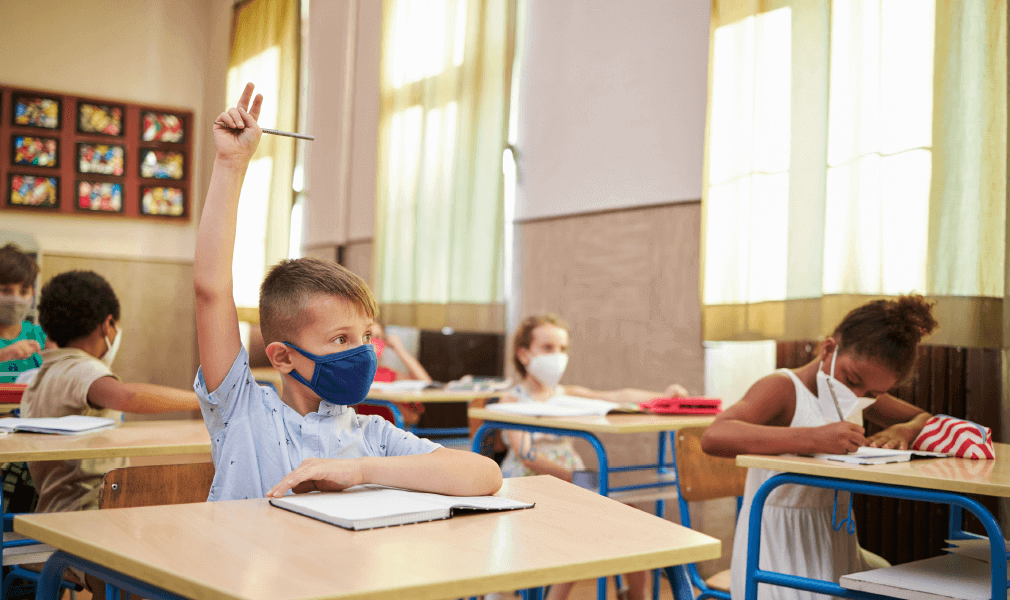Published on August 3rd, 2020
Learning from the pandemic: Steps to take to lessen the “summer” slide
8 minute read

The COVID-19 pandemic created unparalleled disruption in worldwide education systems. Schools shut their doors and moved lesson delivery online, forcing educators and students alike to adapt, often without the necessary processes and tools to do so.
A recent article in The New York Times reported the sudden switch from classroom to remote learning cleared the slate on academic gains for U.S. students while widening the racial and economic gaps. Thus, catching up when the fall session begins – which is already an annual issue, will become even more of a challenge for many.
At the same time, the pandemic has brought new teaching processes to the fore – such as hybrid learning and software and apps that can be used anywhere – helping schools become better prepared to close the learning gaps. That is if the students have access to the internet and a home computer.
The Summer Slide Started Early
This was a school year like none other. In March, teachers were suddenly tasked to teach students remotely, while students were asked to take part in lesson plans, quizzes, and tests remotely. The education system scrambled to meet the needs of its teachers – many of whom were doing their jobs while taking care of their own children – families and more than 55 million students nationwide.
The result? The Summer Slide – the tendency for students to lose achievement gains during the previous school year – started two to three months early. A recent NWEA brief, Collaborative for Student Growth, suggests missing school for a prolonged period will likely have major impacts on student achievement during fall session, especially in mathematics. NWEA is a research-based not-for-profit organization that creates academic assessments for pre-K-12 students.
It explains that students from third to eighth grade usually lose 15% to 30% gains in math and 5% to 30% in reading during the summer break. The article further states, “Once schools are back in session, we must be prepared to support students, many of whom will likely be behind academically.” And since the summer slide – which this year has often been referred to as the COVID-19 Slide – began in mid-Match, the setback could be unprecedented.
Invest in Hybrid Learning So Students Can Learn from Anywhere
Going forward, no one knows what will become of in-classroom learning. While many schools nationwide plan to re-open their doors for the 2020-2021 school year, districts should be working now to ensure the right tools are in place to help students and teachers re-engage in the classroom through hybrid learning.
Hybrid learning combines online educational materials and opportunities for online interaction with traditional place-based classroom methods. It normally involves some learning online with students managing their learning pace and instructor-led learning – think webinars or virtual meetings.
Educational technology tools like software and apps can enable teachers to teach and students to learn remotely. For instance, tools like Explain Everything provide immersive resources and can be accessed whether in the classroom or at home. The benefit is that they can be used – by students and educators alike – regardless of where teaching and learning take place.
Recent research from the Education Development Trust suggests technology can drive student engagement now and enhance pedagogy in the future. With the reliable online infrastructure in place, technology can enrich teaching and learning, in the classroom and remotely. In fact, 82% of the 2020-2021 Promethean State of Technology Report respondents selected “technology use will be routinely combined with traditional resources and teaching methods” as the most likely trend the U.S. education system will see over the next decade. Survey respondents included 1,200 American school administrators and teachers.
Seek Donations So Students Have the Tools They Need
NWEA recommends that policymakers, educators, families, and communities work together to provide support while school is disrupted – particularly mathematics followed by reading – to prevent opportunity gaps from widening.
This support will require addressing the most pressing challenges, like closing the digital divide, by providing increased at-home access to the internet and technology.
Around the country, many school systems are hoping and asking for donations to support nutrition programs for families and laptops and internet access to help students keep up with online learning. For instance, a $280,000 donation made in April is helping Atlanta Public Schools provide food and technology to students who are heavily impacted by the COVID-19 shutdown.
Additionally, some internet providers have offered to supply qualifying families with low-cost home internet and Wi-Fi connectivity.
Education System is at a Turning Point
Although many U.S. schools and districts already have invested in tools to close the learning gaps, school closures have brought to light that edtech is no longer a nice-to-have, but a must-have. Edtech tools allow for much-needed hybrid learning, which will help students re-engage back in the classroom once the fall session begins – and beyond.
To help ensure students have the edtech they need to learn from anywhere (and teachers to teach from anywhere), school systems must tap businesses and their communities at large but apply for all sources of funding, including CARES Act, grants and other philanthropical sources as well.
The nation’s schools are going through unprecedented change. The learning gap has widened, but there are also lessons to be learned and new ways of teaching that will increase engagement and help students make up for the lost time in the classroom. Getting to the other side of this pandemic in education will require a new way of teaching and learning to get students better prepared to start a new school year, whether it’s from a kitchen table or classroom desk.




